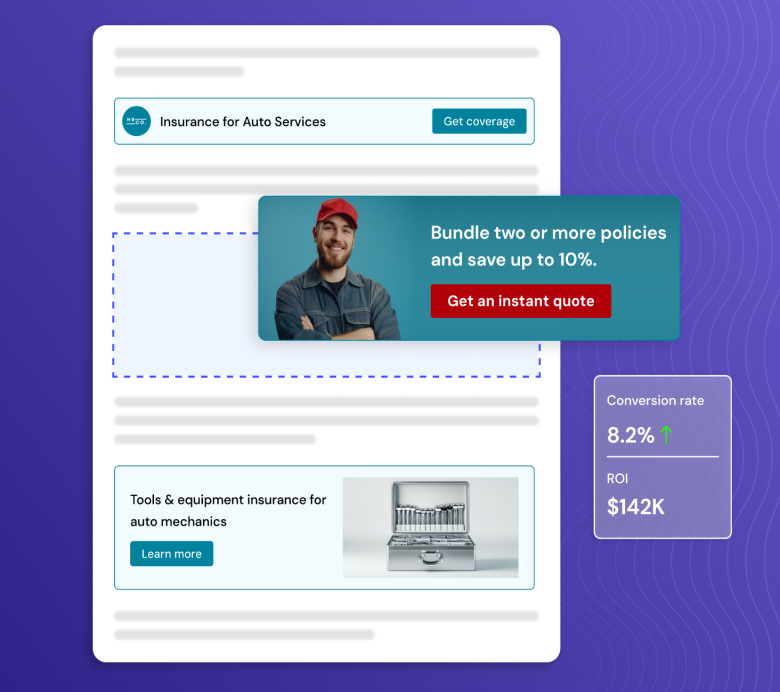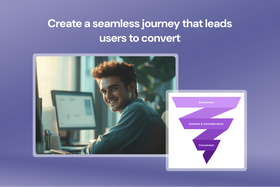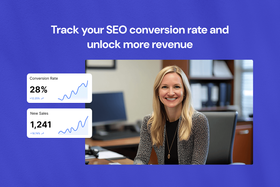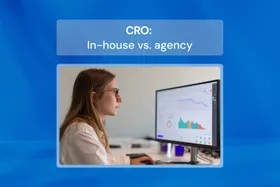AI CRO: 9 ways AI is revolutionizing CRO in 2026
AI isn’t the future of CRO anymore—it’s the present. And if you’re still relying on spreadsheets and intuition, you’re losing conversions.
Updated May 16, 2025
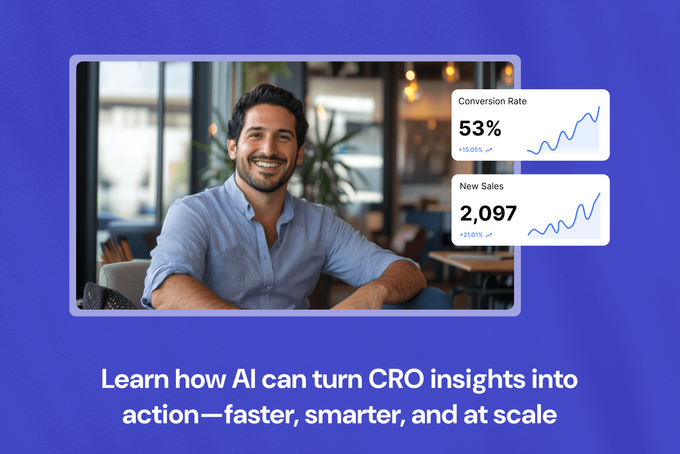
Are you pouring endless hours into A/B testing, heatmaps, and user surveys—only to watch your conversion rates plateau? A lot of user behavior, like rage clicks, hesitation scrolls, or micro-abandonments, happens in the shadows, invisible to even the savviest marketers.
It's a loop of diminishing returns—and you're caught in it. Manual A/B tests take weeks to yield stale insights. Personalization feels robotic, and cookie-cutter calls to action (CTAs) fail to resonate. The stakes? A 1% drop in conversions can cost six figures overnight.
The solution? AI-driven CRO. AI doesn't just optimize pages; it tailors entire journeys, predicting churn before it happens and deploying dynamic content that feels eerily human. Brands like Amazon and Netflix have already used it to quietly siphon market share. Let's see how you can take advantage, too.
Key takeaways
- Marketers are pouring time into A/B tests, heatmaps, and surveys—but often hit a plateau.
- Brands like Amazon and Netflix are quietly dominating thanks to AI-driven conversion strategies.
- From personalized product suggestions to dynamic CTAs, AI CRO adapts based on user history and behavior.
- AI forecasts abandoned carts and runs smarter A/B tests by assigning traffic to the best-performing variant.
What is AI CRO?
AI CRO refers to using artificial intelligence—including machine learning, natural language processing, and predictive analytics—to increase the percentage of users who complete desired actions (e.g., purchases, sign-ups) on a website or app.
Unlike traditional CRO, which relies on experimentation, AI CRO dynamically adapts to user behavior in real time, creating personalized user journeys.
AI CRO treats users as individuals. For example, AI can adjust pricing, content, or layouts for each visitor based on their browsing history, device type, or even cursor movement patterns.
» Check out our in-depth CRO guide.
9 ways AI is revolutionizing CRO
1. Personalization
AI-driven CRO tools analyze user data such as browsing history, purchase behavior, and demographics to create tailored experiences. Personalization creates a sense of relevance and connection, which significantly boosts conversion rates by making users feel understood.
For example:
E-commerce: AI recommends products based on past purchases or preferences, enhancing the likelihood of conversion. Platforms like Amazon use this extensively.
Content platforms: Netflix uses AI to suggest shows or movies based on viewing habits to keep users engaged and reduce churn.
2. Predictive analytics
AI CRO tools use machine learning models to forecast user behavior, helping you be more proactive. With predictive insights, you can tailor your strategies to maximize conversions on your site while minimizing inefficiencies.
You can use them for:
Cart abandonment prediction: AI finds users likely to abandon their carts and triggers actions like discounts or reminders.
Demand forecasting: Predictive analytics help optimize inventory and supply chain management by anticipating customer demand.
» Find out why you need both SEO and CRO to maximize conversions.
3. Dynamic content optimization
Dynamic content adjusts in real time based on user interactions and preferences. It ensures users see the most relevant information for a seamless experience that drives engagement and conversions.
Here are some examples:
Personalized landing pages: AI can modify page elements such as images, text, or CTAs to match user profiles.
Real-time recommendations: AI can show users the right product at the right time, such as promoting rain gear during storms in specific regions.
» Check out CRO best practices to turn traffic into sales in 2026.
4. AI-powered A/B testing
AI conversion rate optimization improves traditional A/B testing by automatically allocating traffic. This approach speeds up experimentation and ensures you make data-driven decisions that improve conversion rates.
Here are some key benefits:
Automated hypothesis generation: AI analyzes historical data to suggest impactful test elements.
Dynamic traffic allocation: AI shifts traffic toward better-performing variations in real time, reducing losses on underperforming options.
Post-test analysis: Machine learning identifies hidden patterns and insights that manual analysis might overlook.
5. Automated CRO audits
AI CRO benchmarking tools can find bottlenecks and suggest better ways to optimize for conversion. These audits save time, eliminate guesswork, and help you focus your efforts on high-impact areas.
Here are some examples:
Performance grading: Assigning scores based on usability, page speed, checkout flow, etc.
Competitor benchmarking: Comparing performance against industry standards.
Actionable insights: Offering specific recommendations for improvement, such as simplifying checkout flows or enhancing product page designs.
» Find advanced strategies to optimize your conversion funnel.
6. Attention heatmaps
AI can generate predictive attention heatmaps that simulate where users are likely to focus on a webpage or ad design. This ensures critical information captures user attention effectively before campaigns are launched.
Here are some uses:
Optimizing visual hierarchy to highlight key elements like CTAs.
Reducing trial-and-error design changes by using insights from data.
» Find out how to make organic marketing work for you.
7. Video marketing
AI analyzes viewer engagement with video content to refine messaging and placement strategies. By tailoring video marketing strategies through AI insights, you can increase viewer retention and conversions.
Here are some uses:
Adjusting video length based on audience preferences.
Optimizing timing for video ads to align with peak engagement periods.
» Learn how to improve SEO ROI.
8. Predictive attention insights
AI conversion rate optimization platforms can predict how users interact with visual content across various channels. These predictive insights ensure that designs resonate with the intended audience while driving conversions.
This helps you:
Optimize designs for maximum impact by highlighting key elements.
Understand cross-channel user behavior for better targeting.
» Discover how to create content that converts visitors into leads.
9. AI copy generation
AI tools can generate multiple copy variants for testing purposes. This speeds up the optimization process by ensuring messaging aligns with diverse user preferences.
For example, Entail CRO can help you automatically create CTAs that are accurate to the context and intent of each section on every content page. Guided by intent, context, and your conversion goals, the AI will select the best CTA to boost CTR within your content pages and maximize revenue.
Rewrite your marketing rulebook with AI CRO
The era of static A/B tests and generic user journeys is over. AI isn't just refining CRO—it's dismantling its old boundaries, replacing hunches with hyper-intelligent insights that act faster than human teams ever could.
The result? A seismic leap from optimization to anticipation—where friction dissolves into hyper-personalized experiences. The question isn't whether AI will dominate CRO—it's whether you'll let it dominate your business.
READ MORE: AI for SEO: Should you change your content strategy?
